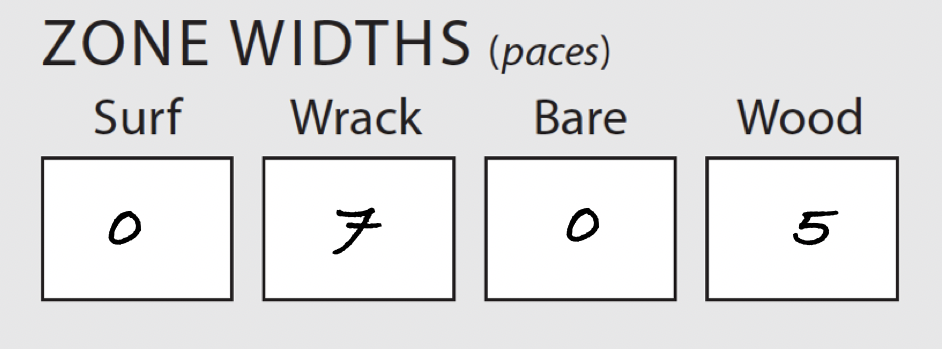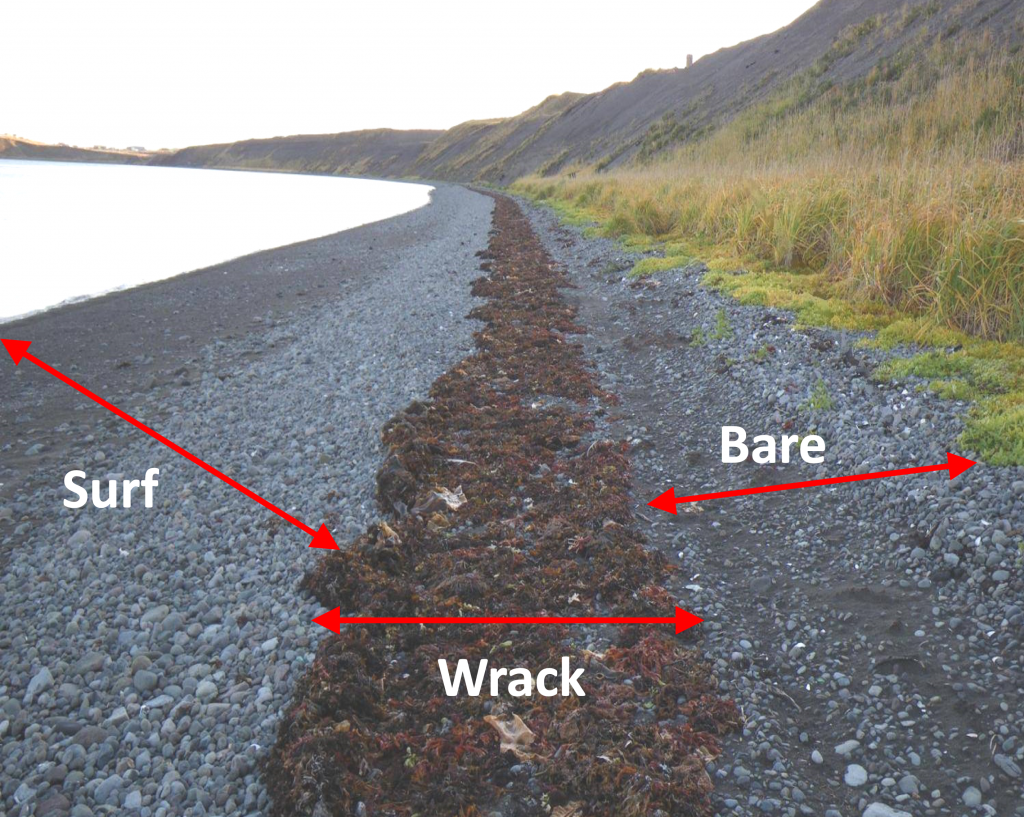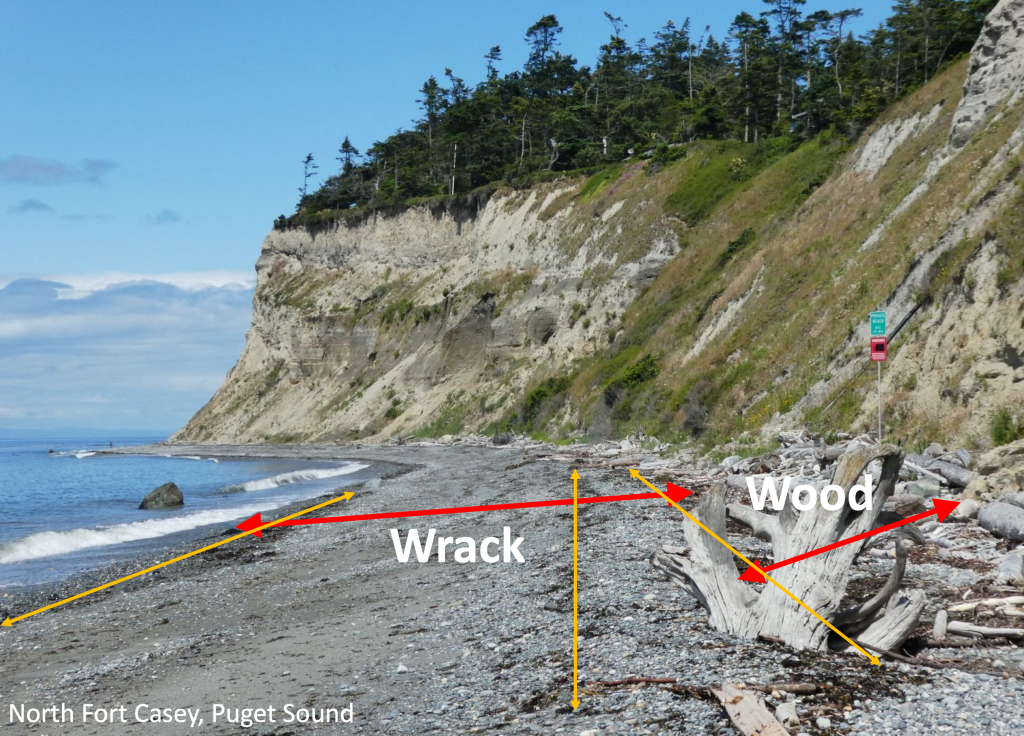Test your knowledge of COASST beach zones with the following beach images and questions. Answers are at the very bottom of the page, so don’t scroll down until you’ve made your decision!
(If you haven’t watched our zones refresher webinars yet, you can find the Beached Birds version here, and the Marine Debris version here.)
A. Which zones are PRESENT in the image below? (Choices include surf, wrack, bare, wood)

B. Which zones are ABSENT in the image below? (Choices include surf, wrack, bare, wood)

C. What’s the best way to notate the paces for the following beach? (Two choices below.)

Choice 1:

Choice 2:

D. Which zones are ABSENT below? (Choices include surf, wrack, bare, wood)

E. Why do we measure zones in paces, rather than meters?
- Measuring tapes that are long enough to measure a beach are extremely heavy to carry on a survey.
- We don’t care about beach zones very much.
- COASST is most interested in the way the zones shift month to month, and survey to survey – the precise width of the beach (down to the exact meter) is less important than getting an easy picture of the beach on the day of your survey
F. How do we standardize beach measurement, when paces are different for each person?
- We just measure the length of an average person’s pace, and use that to translate paces to meters
- We ask every participant for their individual paces per meter measurement and use that in our calculations for each beach.
- A meter is exactly equal to a pace.
Answers below! Stop reading now if you haven’t finished the quiz!
A. The zones that are PRESENT are: Surf, Wrack, and Bare

B. The zones that are ABSENT are: Surf, Wrack, and Vegetation.

C. The correct way to notate the absent zones on this beach is Choice 1. Choice 2 leave us wondering if the zone was missing, or if you forgot to fill in a few fields on the data sheet. Using 0’s leaves no room for interpretation!
D. The zones that are ABSENT are: Bare, Wood, and Vegetation.

E. #1 and #3, but definitely not #2! We care about beach zones because they help us understand the ‘stickiness’ of your beach!
F. #2. We ask that everyone records the ‘pacer for the day’ on the cover sheet, and we have paces per meter stored for every member of the COASST participant team. You only need to report your paces per meter to us once! If you haven’t already, send us your worksheet, or use the worksheet to calculate your paces per meter, and send us the results in an email!
If you have any questions about the answers on this quiz, please feel free to drop a question in the comments below, or send us an email. Others most certainly have the same questions!
